nalco group
bone, muscle & joint pain physio
BOOK NOW / WHATSAPP ABOUT YOUR PAIN OR INJURY
- NOVENA 10 Sinaran Drive, Novena Medical Center #10-09, Singapore 307506
- TAMPINES 9 Tampines Grande #01-20 Singapore 528735
- SERANGOON 265 Serangoon Central Drive #04-269 Singapore 550265
Home > Blog > Physiotherapy & Hand Therapy > Conditions > Elbow Pain > Hand Physiotherapy For Loose Bodies In Elbow
Hand Physiotherapy For Loose Bodies In Elbow
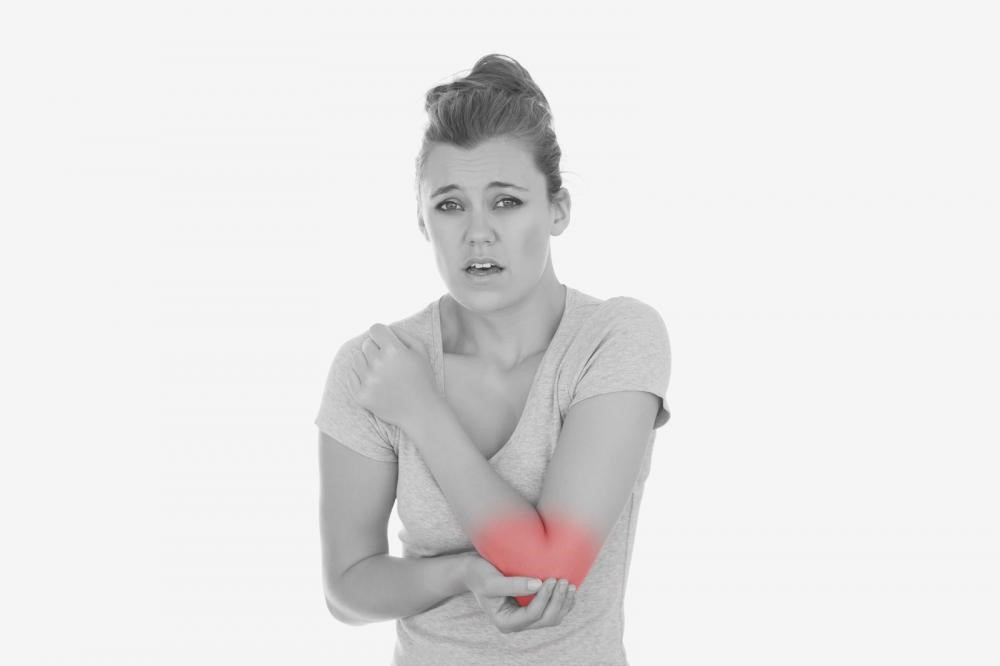
Loose bodies are basically tiny fragments of cartilage or bone that get broken off inside an elbow joint. These fragments are known to float freely inside the elbow, causing pain and sometimes even getting trapped between the moving parts of the elbow joint (this will cause the affected elbow to be "jammed" or "locked"
In this post, we’ll take an in-depth look at loose bodies in the elbow, some of their most common causes and symptoms, and a couple of non-surgical and surgical treatment options that are known to be effective.
First of all, What Are Loose Bodies in the Elbow?
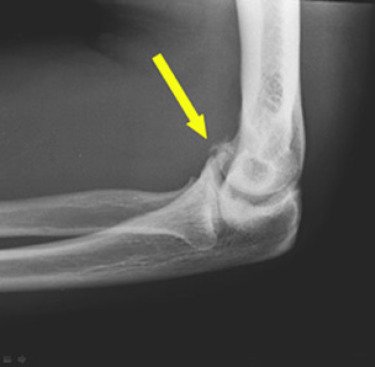
Our elbow joint connects three bones and relies on muscles, tendons as well as ligaments to help control movement and provide stability to the elbow structure. The two bones in the forearm (which is the ulna and radius bone) as well as the humerus in the upper arm meet at the flexible elbow joint.
There is the shock-absorbing cartilage which is a smooth elastic tissue that protects the ends of these long bones and helps them glide smoothly without causing any damage...but occasionally, small fragments of cartilage or bone, called loose bodies, can break off from cartilage or bone and "float" around the elbow joint.
They often arise from arthritis or impingement lesions and they’re relatively common.
These loose bodies may also happen due to developmental cartilage issues (osteochondritis dissecans) and other cartilage injuries.
Conservative treatment for loose bodies comprises painkillers as well as physiotherapy.
That being said, in very severe or painful cases, arthroscopy is typically recommended which involves removing these loose bodies to provide pain relief.
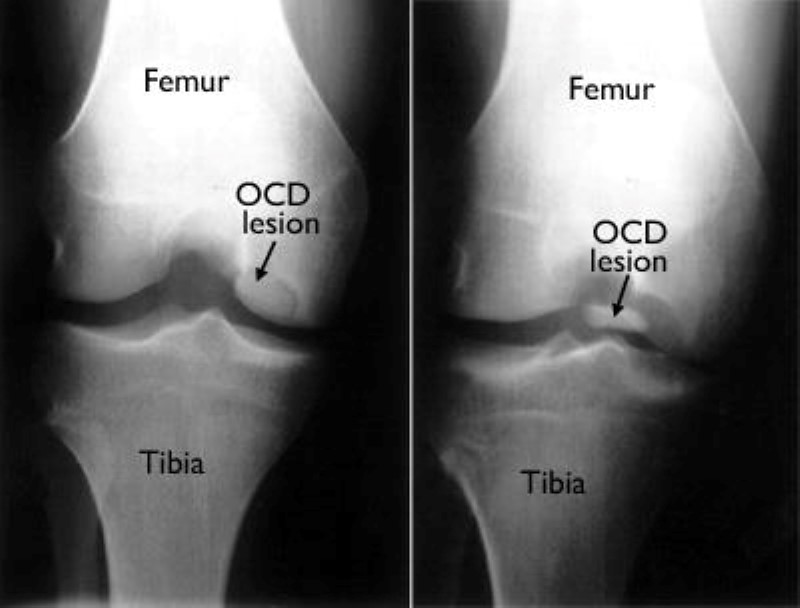
Osteochondritis dissecans (OCD) in the knee
....then, What Causes Loose Bodies in Elbow?
If you have a loose body in your elbow joint, then it’s possibly a result of an underlying problem. Even though osteoarthritis happens to be the most common cause of loose bodies, they can also form as a result of an elbow fracture.
Additionally, this condition is can be caused and / or aggravated by certain lifting activities (such as heavy manual labor and weightlifting) as well as some sports that require repetitive overhead movements that inflict a huge amount of stress along the elbow joint.
Loose bodies may also form if there’s bleeding within the elbow joint or due to destruction of tissues that line the elbow joints, which is often associated with tuberculosis and rheumatoid arthritis.
Some other causes include cartilage and bone inflammation, benign tumors of the synovial membrane, and trauma to the joint.
Common
Signs and Symptoms of loose bodies in elbow / elbow joint
Patients with loose bodies within the elbow joint often report elbow pain and stiffness as the most common symptoms.
This condition may also result in symptoms such as clicking, crepitus (a grating sound or sensation), locking, and catching of the elbow.
Moreover, if the loose bodies are found within the olecranon fossa or coronoid, the range of movement will also get affected.
It’s also important to note that patients may feel like something’s moving or floating inside their elbow joint.
If the loose cartilage in elbow gets trapped between the moving parts of the joint, the elbow may feel as though it’s stuck, and in some cases, it may also feel swollen.
Who’s More at Risk of getting this condition?

Since active individuals and athletes are more susceptible to sports injuries and elbow fractures, they’re at an increased risk of developing loose bodies in their elbow joint.
Furthermore, people who participate in repetitive overhead movements (such as manual labor and other work-related activities) for a long period of time, are also at risk.
Loose Bodies in Elbow:
Treatment Options
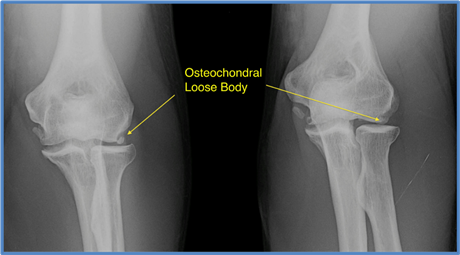
An elbow X-ray is often effective in helping diagnose loose bodies in the elbow joint.
However, small loose bodies that contain tiny fragment of bone or not may not appear on an X-ray which is why they can be quite difficult to identify (sometimes too small to see, or poor angle etc).
In such cases, other diagnostic procedures like
- arthrography or CT scan
- imaging / diagnostic ultrasound and
- MRI scans
may be conducted to diagnose the condition and locate loose bodies within the joint.
Once the diagnosis and symptoms have been confirmed, reliable treatment options are considered based on the severity of the condition.
If the loose bodies are formed as a result of an elbow fracture, it may appear as a large and free-floating fragment of bone. Other loose bodies are usually smaller and don’t contain any bone fragments. An orthoscopic procedure is generally recommended to remove the loose bodies and correct the condition, depending on the location and size of the loose body.
But in cases where a large loose body is detected, it may be advisable for the surgeon to fix it to an adjacent bone. It’s worth considering that it may be possible to break up these loose bodies and allow the natural enzymes in the human body to handle the degradation of the remaining particles.
Nonoperative Treatment
For patients who don’t show mechanical symptoms like locking, catching, and clicking, NSAIDS (non-steroidal anti-inflammatory drugs) and activity modifications may be recommended to provide relief from pain.
In addition, physiotherapy exercises can also help provide strength to the elbow and improve function. However, in case of mechanical symptoms, immediate surgical intervention is necessary because the presence of loose bodies in the joint may eventually result in further articular damage.
Surgical Treatment
Even though most people can live with loose bodies in their elbow joint without facing any difficulties, surgery can prove to be extremely helpful if the symptoms worsen with time and pain is attributed to the presence of loose bodies.
If your symptoms are quite troublesome and interfere with your work-related or sports activities, you should definitely seek surgical treatment right away. Surgery typically involves arthroscopy (also known as ‘key-hole’ surgery) to get rid of the loose bodies that are floating or trapped within the joint. The surgical removal of loose bodies is found to help relieve painful symptoms.
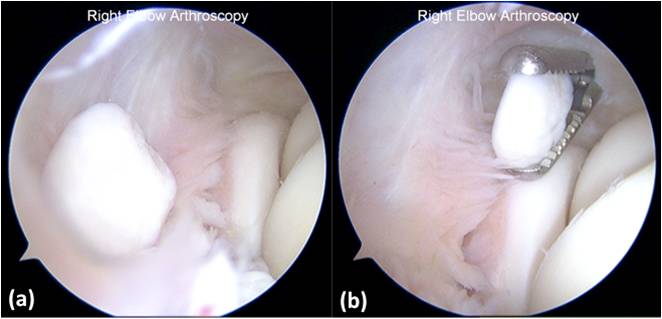
Elbow arthroscopy consists of minimally invasive techniques that cause less surgical trauma to muscles and allow for a speedy rehabilitation and recovery process.
Still, it’s important to remember that aside from providing relief from painful symptoms, arthroscopy may not serve as the ultimate cure for symptoms that are caused by the primary condition of elbow osteoarthritis (which is often the cause of mild ongoing pain in the elbow).
Although this procedure can be technically demanding, it’s known to be safe and effective.
The surgeon will use a suction tip to remove the loose body or a small needle to hold it first and then grasp it with a surgical instrument (aptly called the grasper). In cases where the loose bodies are located in the joint space, the doctor may use a special instrument (called a resector or mechanical burr) to break up the loose bodies.
As discussed previously, these broken pieces will easily get degraded by the body with the help of a mechanism known as enzyme degradation.
Larger loose bodies that result from bone or cartilage inflammation or elbow fractures are simply reduced and fixed in position with the help of pins or screws. Moreover, the surgeon may perform a procedure known as partial synovectomy if the loose body occurs due to a benign tumor of the synovial membrane. This procedure involves removing part of the synovium.
On occasion, another procedure called arthrotomy may be performed to get rid of the loose body. It involves an open surgery where the loose body is removed after incisions are made into the elbow joint.
Needless to say, all kinds of surgical treatments involve a couple of risk which may vary from patient to patient. With elbow arthroscopy, the complications are often minor and treatable. Still, you should take the time to discuss the potential risks with your orthopedic surgeon before the procedure.
If your doctor has determined elbow osteoarthritis to be the primary cause of loose bodies in your elbow joint, there’s no need to fret because there are many different operations available that can help alleviate your symptoms and effectively treat your condition.Physiotherapy Treatment for Loose Bodies in the elbow
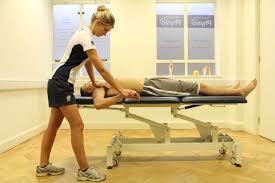
After surgery, the patient may require a rehabilitation program that will help manage painand restore strength and function to the affected elbow. If the pain allows, performing motion exercises is also generally recommended immediately after the surgery.
Even though these exercises can be performed at home, it’s advisable to seek assistance from a trained and qualified physiotherapist, especially if the patient is at an increased risk of developing joint contracture.
Patients are also instructed to modify their activities to promote soft tissue healing and avoid further complications. Usually, strengthening exercises are instituted within 4 to 6 weeks and regular activities can be resumed after around 8 to 12 weeks following surgery.
If you feel like something’s floating around your elbow joint, it’s
highly likely that you have developed loose bodies.You should consider opting
for surgical or non-operative treatment, whichever works for you, and get in
touch with our experts.
Our trained professionals will consider the severity of your condition and evaluate your symptoms so they can help you heal naturally and avoid further complications using a variety of stretching and strengthening exercises.
